Technically, this is a review of two different collections: the Darius Cozmic Collection Console and the Darius Cozmic Collection Arcade. They’re actually quite different takes on the same series of side-scrolling arcade shooters that show off the strengths and weaknesses of a surprising array of hardware at the time.
These collections give fans of old-school shmups a chance to experience a classic series in a fantastic variety of different flavors.
Taito’s Darius was always a bit more obscure than more popular shooters like Gradius, Raiden, and R-type. This is partially thanks to the specialized three-screen hardware the original Darius arcade cabinets used. Where most games were a single CRT and could have their mainboard swapped out if needed for a myriad of other games, Darius was expensive and much harder to find.
Like pretty much all shmups of the time, Darius was all about shooting bad things and not dying, and not dying, as usual for the genre, was diabolically hard. The series had a few key elements that set it apart, aside from the vibrant three-screen, widescreen hardware.
The marine-themed enemies were immediately distinctive. Mechanical sharks, starfish, assorted fish mixed with other more traditional tank and gun emplacements. Bosses included giant robotic angler fish, a sperm whale, swordfish, piranha, octopus, and many more.
The player’s ship included a basic forward blaster, bombs, both of which could be upgraded through power-ups. The blue power-up gave the ship a shield. The overall weapons system wasn’t as diverse as Gradius or R-Type but evolved in minor ways through the different versions.
The Darius Cozmic Collections review: Through a Sea of Stars
What kept players coming back was the game’s branching map. Twenty-eight connected levels enabled players to pick their own path through the game. Since the level before opened up a choice of two levels to advance to, it added an unheard-of sense of replay value.
When most games were straightforward linear romps meant to amass quarters with punishing difficulty levels and pixel-perfect timing and control, this branching level map was a big deal. So, it’s easy to understand why players were eager to have the game at home, despite obvious hardware limitations.
Every console version of Darius was a mix of the arcade versions that kept the themes and general mechanics, with redone levels and graphics catering to the unique properties of the individual platform. The console collection features nine ports (released between 1990 and 1993), including the same game from different regions.
Darius 2 (or SAGAIA in the West) was specific to Sega hardware — even the EU-only 8-bit Sega Master System version is included in this collection. On the Nintendo side were Darius Twin and Darius Force (Super Nova in the U.S.), each with a SNES and Super Famicom variant.
Finally, Darius Alpha and Plus were really obscure versions of the original arcade game ported to the NEC PC Engine (the TurboGrafx-16 in the U.S.). One was never actually released, and the other was nearly impossible to find according to the collection’s historical facts.
Considering just how good these versions are today, it’s a shame they never saw wide release. While downgraded in size and scope, these ports are actually the closest to the arcade version and the most impressive as a result.
It’s just unfortunate the collection doesn’t include Super Darius, which was released more widely on CD for the PC Engine’s CD-ROM add-on. It was the closest to a true direct port of the arcade game, using the actual coin-op soundtrack with all 26 bosses (Determined fans can at least experience it as part of the incredibly beefy collection included on the TurboGrafx-16 Mini console).
The arcade collection contains seven titles — three main games with several variants of the first and second (much how Capcom created multiple variations of Street Fighter 2). Darius 2 is downgraded to just two-screens and includes two SAGAIA variants. Darius Gaiden is the final game in the series. It was a one-screen cabinet and added a superbomb option seen in so many other popular shooters.
Each game in the arcade collection keeps the same aspect ratio as its original version. The graphics are still gorgeous, and the controls still precise. You can continue as much as you’d like, making them easier to manage than the console versions. This collection also lets modern gamers hear the full arcade soundtrack. In the crowded overloaded atmosphere of an 80s arcade, it was easy to overlook the superb scores found here.
Both of these collections are relying heavily on the power of nostalgia to be a significant selling point. The main menu includes a digital manual and brief history for each game, and you can save your game at any time during play. There’s no rewind or specific new cheats or options to customize the experience, though.
The Darius Cozmic Collections Review — The Bottom Line
Pros
- Beefy in scope
- Chronicle the history of the series very well
- Superb bosses, branching levels, and plenty of variation between different console versions
- Still pretty damned impressive and well worth playing for anyone who enjoys classic shmups
- Ability to pause and save at any time is a welcome addition
Cons
- Pricey
- Not a lot of extras to pad the packages out
- Console collection lacks Super Darius, which was the best home version of the arcade original of that era
The classic shooter has held on as a genre since Taito’s original Space Invaders, and these games are definitely worthwhile for gamers who still love the challenge and rhythm of a good bullet ballet. The major sticking point is simply the price. The console collection, at release, is a full-on $60, while the arcade collection is $45. Either way, if you just get one, the Arcade pack is the quintessential Darius experience.
Simply put, the original arcade sources were noticeably better in every way in comparison to the console ports (and would remain so until DARIUSBURST Chronicle Saviours on the PS4/Vita). The console versions have their own appeal and are fine shooters, but don’t compare with the size, scope, and presentation of the source material.
[Note: A copy of the Darius Cozmic Collection was provided by Taito for the purpose of this review.]

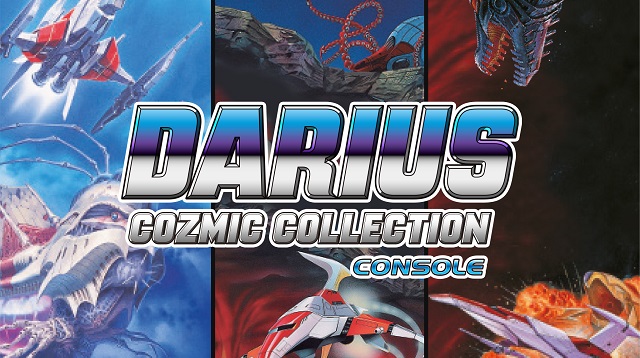
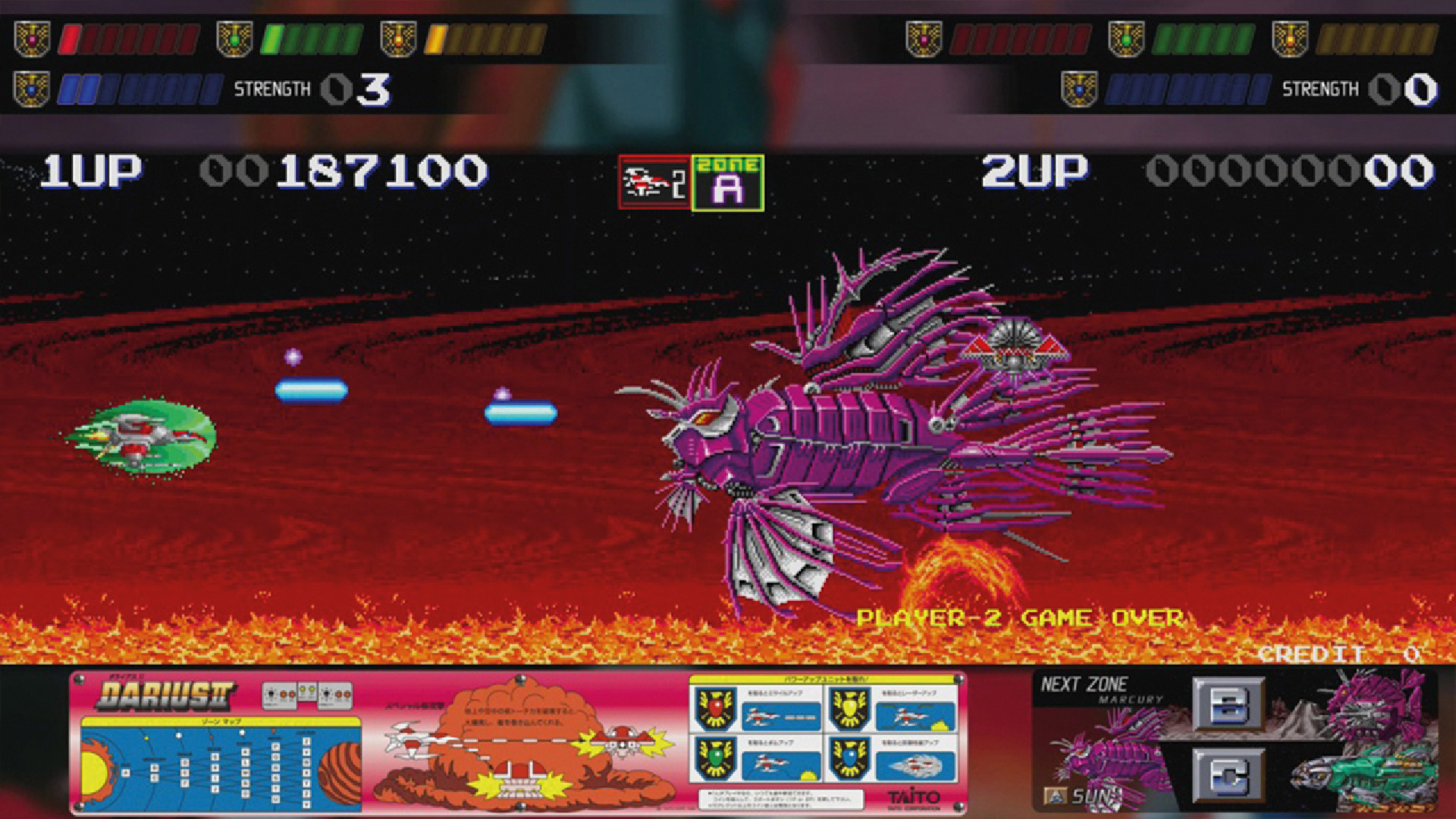
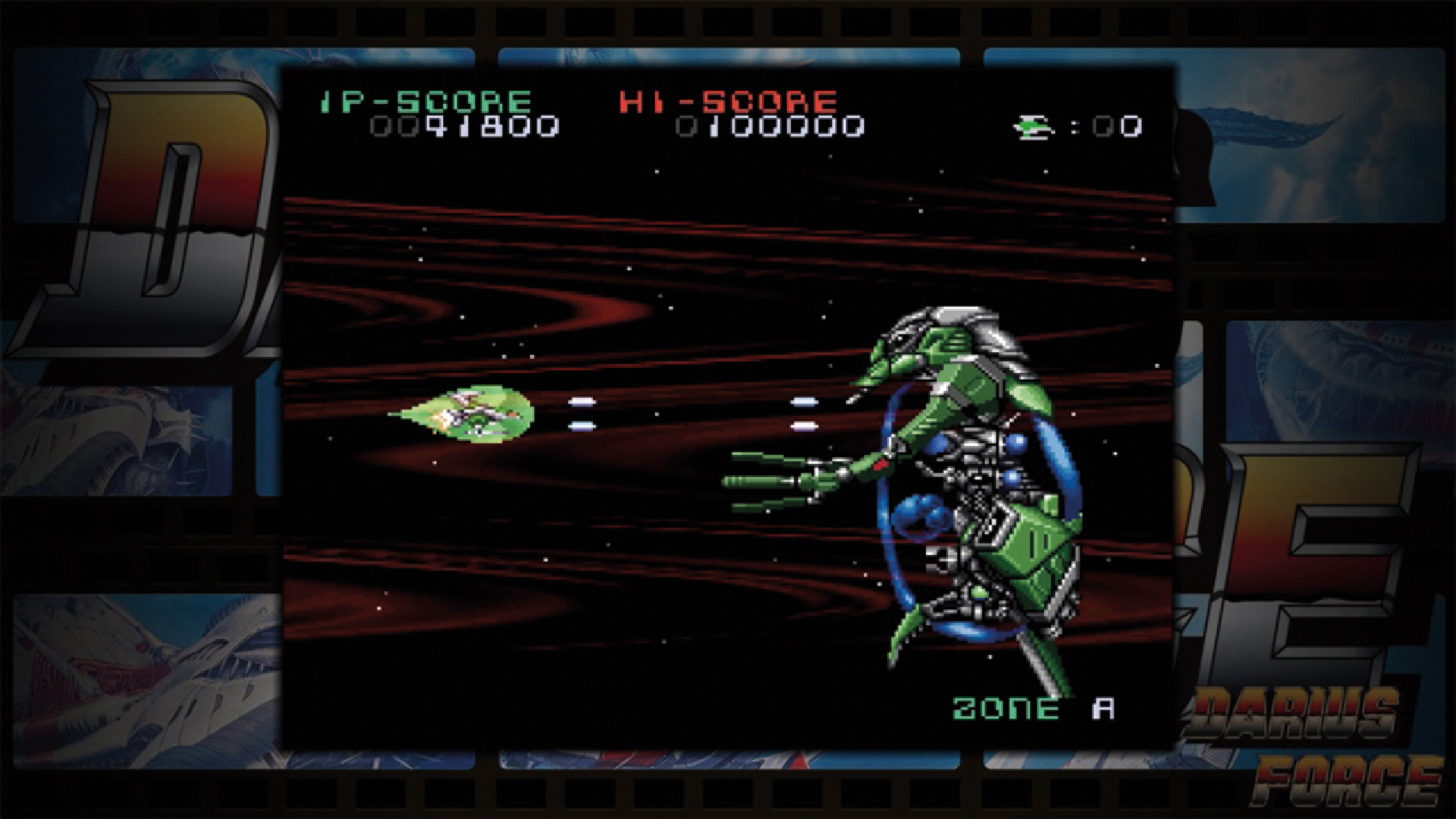
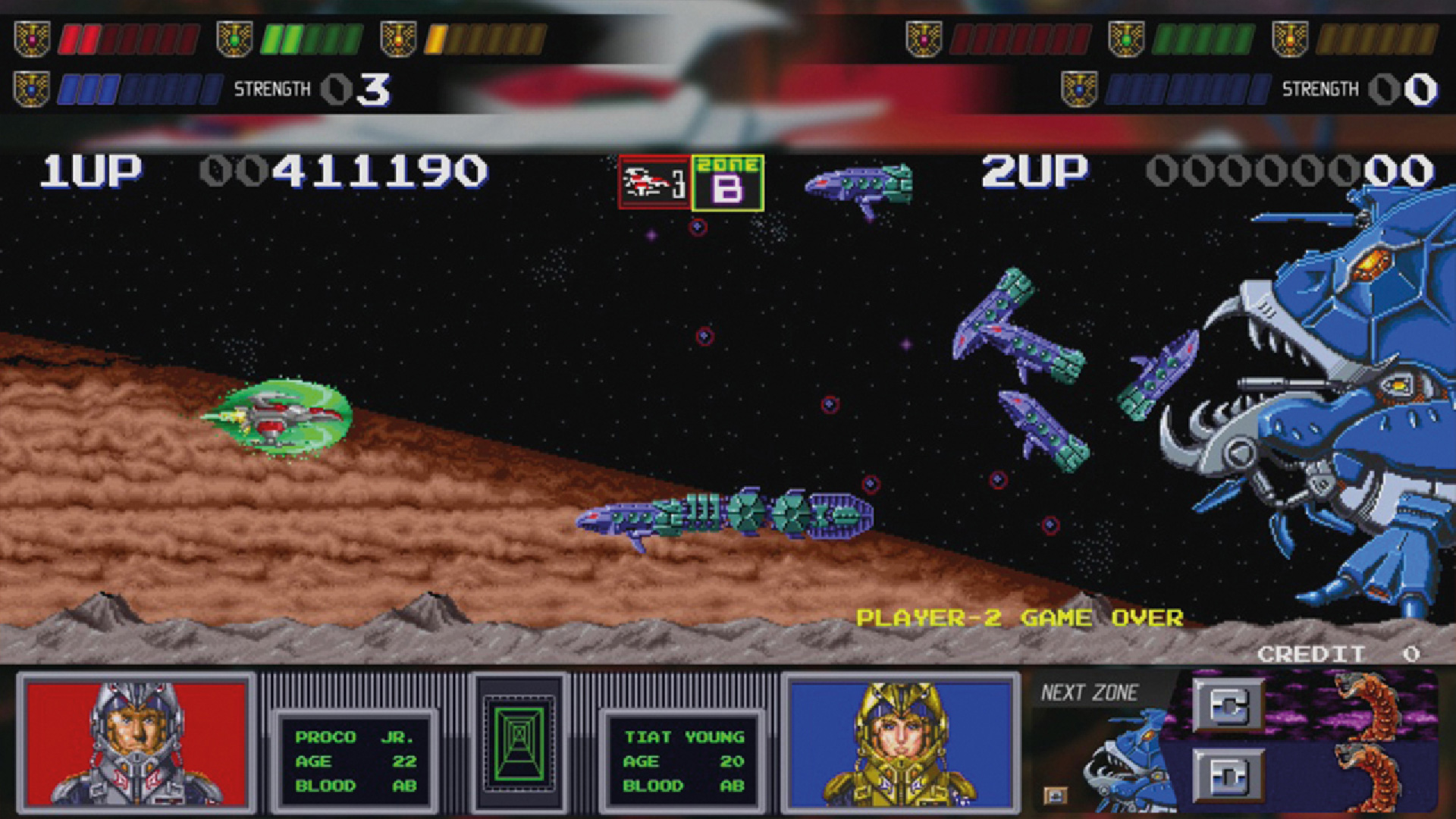
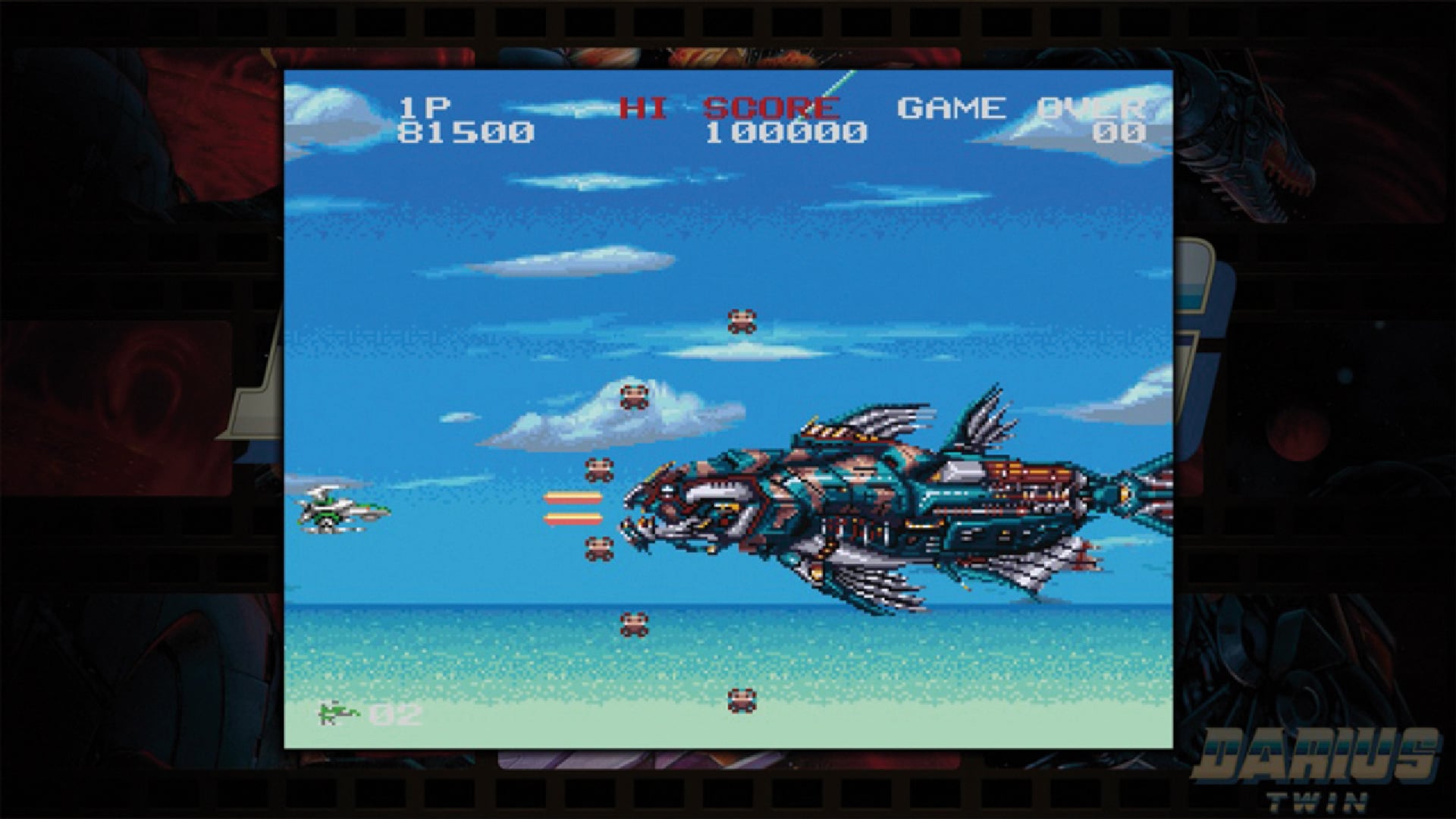





Published: Jun 17, 2020 08:01 pm